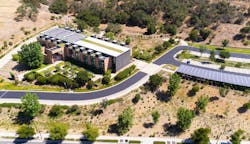BendPak, a manufacturer of vehicle service equipment and specialty consumer products, has purchased a new global headquarters in Agoura Hills, California. The 22,256-sq.-ft. administrative building, built in 2012 for the Conrad N. Hilton Foundation, is situated on 12 acres in the foothills of the Santa Monica Mountains, just west of Los Angeles. BendPak expects to move from its current Santa Paula, California, offices by the end of the summer.
"We are thrilled to own this landmark property," said Don Henthorn, BendPak founder and chairman emeritus. “Our business is booming, and we’ve simply outgrown our current space. We believe this location will enhance our ability to serve our customers, while also providing our team with an uplifting and energizing work environment.”
The acquisition is the latest in a series of recent BendPak real estate expansions. In 2020, the company completed a 50,000-sq.-ft. addition to its Santa Paula distribution and manufacturing center and opened a new 100,000-sq.-ft. distribution and administrative building in Alabama. Earlier this month, BendPak announced the completion of a new 90,000-sq.-ft. building on the Alabama campus. Operations at these facilities will continue. The new headquarters will be home to client and customer service, engineering, product development, marketing, information technology, human resources, accounting, and management.
Read more: BendPak completes East Coast expansion
BendPak’s new center of operations includes several water features, such as a waterfall, brook, and koi pond, as well as exterior relaxation and meeting spaces for employees.
“Our new global command center will enable us to provide a healthier, more comfortable and supportive work environment to help our employees thrive personally and professionally,” said Jeff Kritzer, BendPak president and CEO.
Designed by ZGF, an architectural firm specializing in sustainable and regenerative design, the building includes sustainable design elements such as extensive water conservation systems, a green roof, solar thermal heating, and passive cooling systems, drought-tolerant native plants, and an active shading system. Additionally, the net-zero energy building uses the sun to generate all the power it needs through an array of solar photovoltaic panels covering its parking canopy.





